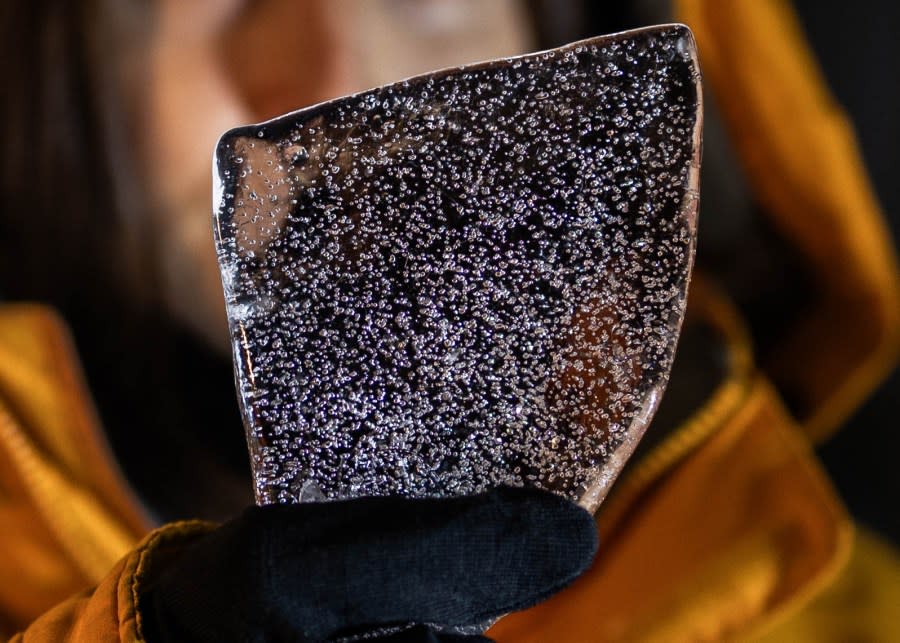Earth experiencing ‘unprecedented’ shift in carbon dioxide levels, Oregon State study says

PORTLAND, Ore. (KOIN) — The carbon dioxide building up in the Earth’s atmosphere is currently accumulating 10 times faster than it did during any other period in the past 50,000 years, a new study led by Oregon State University researchers shows.
Researchers compared past and present levels of C02 by analyzing ancient atmospheric gasses trapped in air bubbles deep within the Antarctic ice. Experts collected the core samples by drilling 2 miles deep into the Antarctic ice sheet. The collected ice sample represents a historical record of Earth’s climate spanning hundreds of thousands of years, Oregon State University said.
Human-related emissions are the primary cause of the increased rates of C02, according to the study, which was published in the Proceedings of the National Academy of Science. The study was led by OSU assistant professor Kathleen Wendt.
“Studying the past teaches us how today is different,” Wendt said. “The rate of CO2 change today really is unprecedented. Our research identified the fastest rates of past natural CO2 rise ever observed, and the rate occurring today, largely driven by human emissions, is 10 times higher.”
Eddie Vedder, Pearl Jam endorse Portland City Council candidate

During the last ice age, which ended roughly 10,000 years ago, carbon dioxide levels appeared to shoot “much higher” than average levels, the university said. Researchers were initially unable to determine the cause of the rapid fluctuation in C02.
“You probably wouldn’t expect to see that in the dead of the last ice age,” Wendt said. “But our interest was piqued, and we wanted to go back to those periods and conduct measurements at greater detail to find out what was happening.”
Aurora is back: Northern lights may be visible in Pacific Northwest Tuesday
Using core samples from the West Antarctic Ice Sheet Divide, Wendt and her colleagues analyzed these periods in greater detail. The researchers ultimately identified a pattern that showed the spikes in carbon dioxide aligned with cold periods in the North Atlantic known as Heinrich Events. OSU professor Christo Buizert, who co-authored the study, said that Heinrich Events are associated with sudden climate shifts around the world.
“These Heinrich Events are truly remarkable,” Buizert said. “We think they are caused by a dramatic collapse of the North American ice sheet. This sets into motion a chain reaction that involves changes to the tropical monsoons, the Southern hemisphere westerly winds and these large burps of CO2 coming out of the oceans.”
During the most extreme Heinrich Events, C02 increased by approximately 14 parts per million in 55 years. These spikes in C02 occurred every 7,000 years or so. Today, C02 levels increase by the same magnitude every six or seven years, researchers said.
Carbon Dioxide is a greenhouse gas that occurs naturally in the Earth’s atmosphere. The rise of C02 in the Earth’s atmosphere creates a “greenhouse effect” that warms the Earth’s climate, research has shown. In the past, levels have fluctuated due to ice age cycles and other natural events. However, modern levels are rising as a result of human emissions.
Copyright 2024 Nexstar Media, Inc. All rights reserved. This material may not be published, broadcast, rewritten, or redistributed.
For the latest news, weather, sports, and streaming video, head to KOIN.com.

